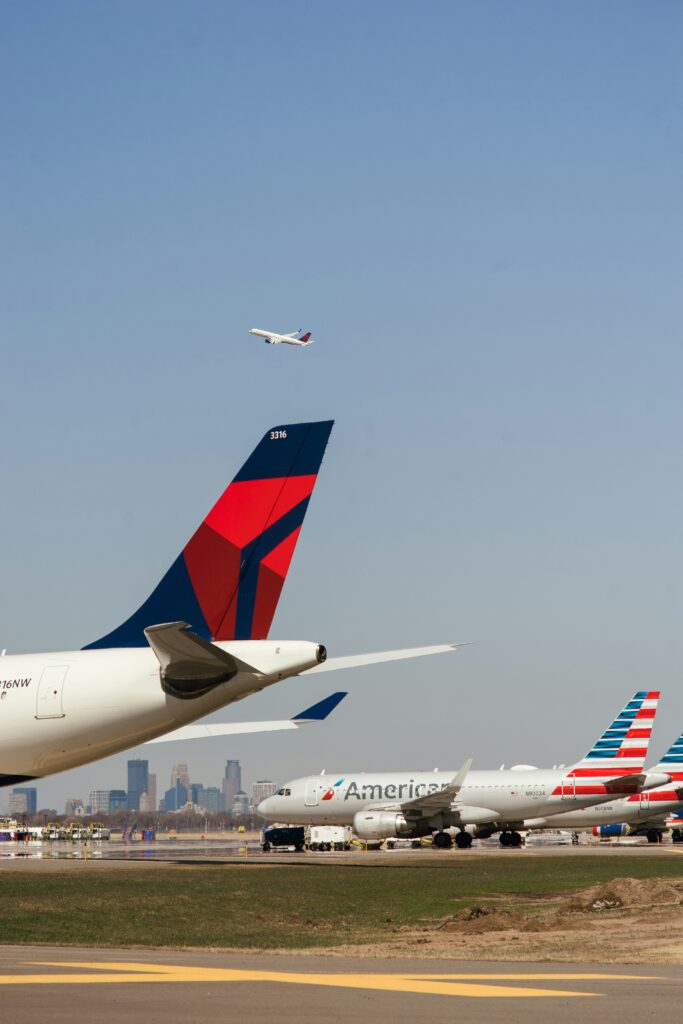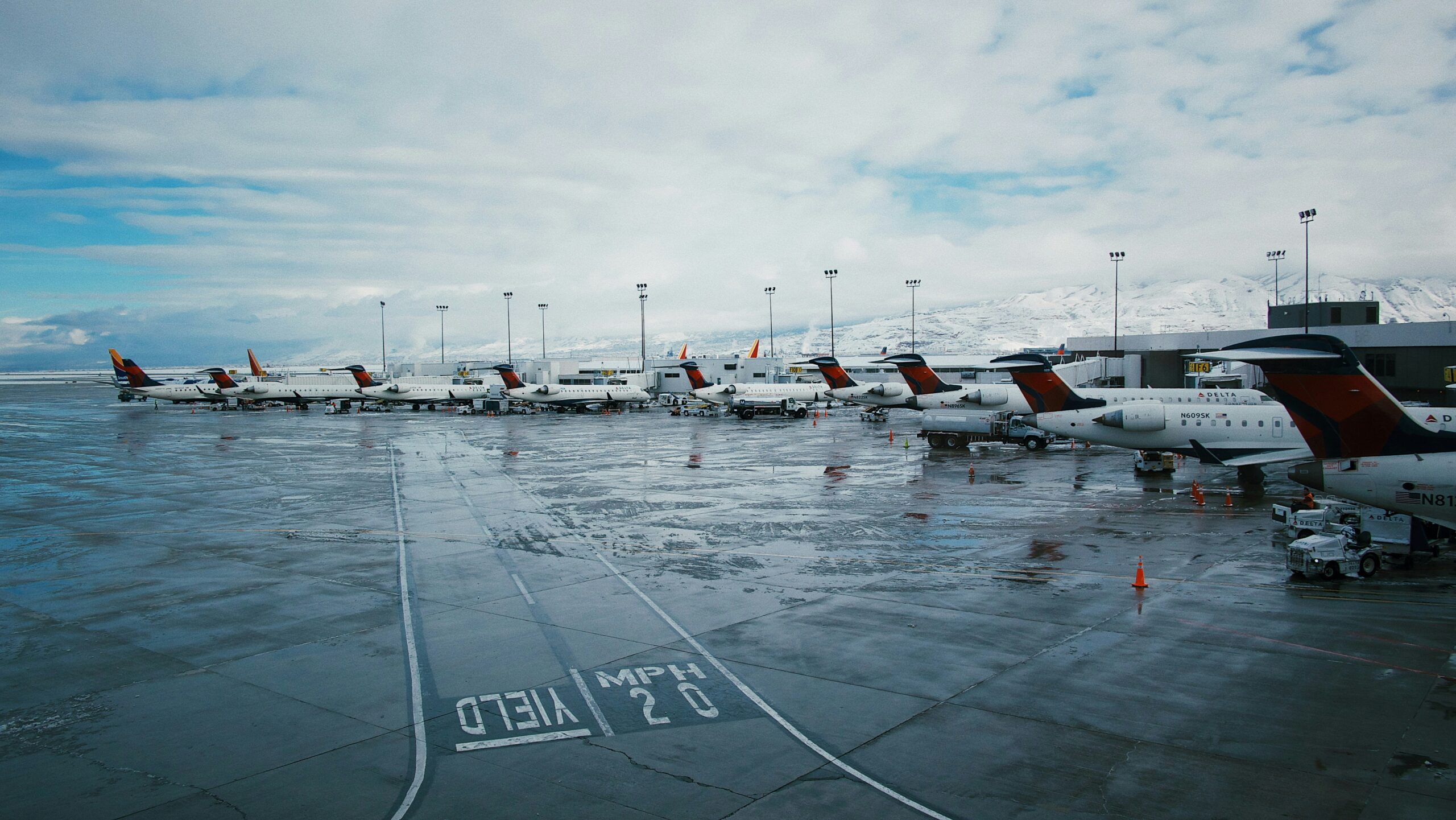A terrifying midair incident left dozens injured when a Delta flight severe turbulence episode caused passengers, crew members, and beverage carts to be thrown violently around the cabin in late July. Federal investigators have released a preliminary report shedding light on the cause of the incident, which occurred on Delta Air Lines Flight 50 en route from Salt Lake City to Amsterdam.
According to the National Transportation Safety Board (NTSB), the turbulence struck suddenly and with unexpected force, turning what should have been a smooth transatlantic flight into a chaotic scene.
The Incident
Delta Flight 50 had taken off from Salt Lake City on July 30, heading to Amsterdam with 246 passengers and 10 crew members on board. The Airbus A330 had climbed to its cruising altitude of 37,000 feet when the flight crew noticed weather buildups ahead and requested a route change from air traffic control.
Shortly after entering the new flight path over Creston, Wyoming, the plane encountered severe turbulence. The fasten seatbelt sign had been turned off, and flight attendants had just begun beverage service. This timing proved disastrous.
The turbulence caused:
- Several passengers and flight attendants to be launched into the ceiling before crashing to the floor.
- Beverage carts to fly through the aisle.
- The plane to roll 40 degrees to the left and drop 2,500 feet in about 20 seconds.
Passengers reported feeling up to 1.75 G-forces, nearly twice the normal gravitational pull, during the event.
Injuries and Emergency Diversion
The sudden drop left a trail of injuries across the cabin. According to NTSB’s report:
- 24 passengers were medically evaluated after landing.
- 18 were hospitalized, with injuries ranging from broken bones to head trauma.
- Two flight crew members sustained serious injuries, while five others suffered minor injuries.
The pilots decided to divert the flight to Minneapolis, where emergency responders were waiting to treat the injured.
What Investigators Found
NTSB’s preliminary report indicates that severe weather was present in the area. National Weather Service radar showed red clouds over Creston, Wyoming, signaling severe thunderstorm activity.
While the pilots had seen the weather on their instruments and changed course, the turbulence was not anticipated to be this intense, which is why the seatbelt sign had been switched off.
The NTSB will continue its investigation to determine if additional factors contributed to the severity of the incident and whether procedural changes could prevent similar events in the future.

Climate Change and Rising Turbulence Risk
Experts say incidents like this are becoming more common. Severe turbulence is no longer a rare event — climate scientists warn that global warming is intensifying jet streams, which can lead to more frequent and stronger turbulence events.
According to Paul Williams, a professor of atmospheric science at the University of Reading, clear-air turbulence — the kind that can strike without warning — could increase significantly by mid-century.
“Airlines need to prepare for a future where turbulence like this is much more common,” Williams told aviation safety researchers earlier this year. “Passengers should expect to keep their seatbelts fastened more often during flights.”
Advice for Travelers
While incidents like the Delta flight severe turbulence scare are rare, experts offer the following tips to stay safe:
- Keep your seatbelt fastened whenever seated, even if the sign is off.
- Store carry-on luggage securely, as loose items can become dangerous projectiles during turbulence.
- Follow crew instructions promptly — if turbulence is forecasted, attendants may suspend service for your safety.
- Choose seats strategically — sitting near the wings typically results in less motion compared to the front or rear of the aircraft.
Industry Response
Delta Air Lines issued a statement following the incident expressing its concern for passengers and crew.
“Nothing is more important than the safety of our customers and crew,” Delta said. “We are working closely with the NTSB as they investigate the cause of this severe turbulence event.”
Aviation analysts say the industry may need to rethink seatbelt sign protocols and invest in improved turbulence detection systems to prevent similar occurrences.

Final Thoughts
The Delta flight severe turbulence incident highlights just how unpredictable air travel can be, even on a routine flight. As climate change continues to reshape weather patterns, both airlines and passengers will need to be prepared for the possibility of more frequent and severe in-flight turbulence.
For travelers, the lesson is clear: keep that seatbelt fastened, even on smooth flights — because turbulence can happen when you least expect it.
Source:
TravelPulse – Severe Turbulence Threw Passengers Into Ceiling Aboard Delta Flight


